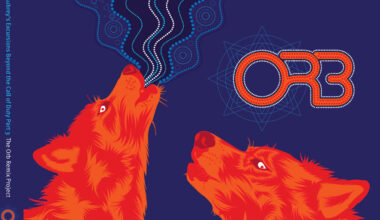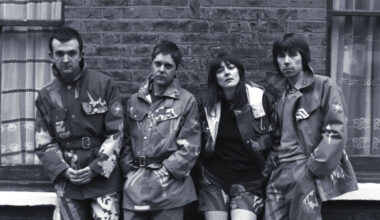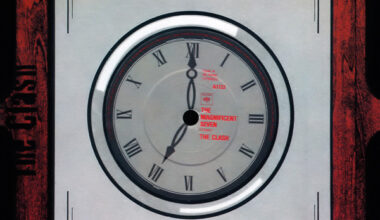Our free-range columnist wanders off on a new york adventure, recalling the early days of the famous Gotham imprints Strictly Rhythm and Nu Groove

“YOU CAN LEAVE NEW YORK BUT, ONCE ITS UNIQUE ALLURE IS IN YOUR SOUL, THE CITY NEVER LEAVES YOU”
From the moment I first stepped off the plane in 1983, New York City ignited an indescribable buzz that would never leave me; alive and dangerous with an intoxicating electricity that coursed under the sidewalks like the subway system.
When a record company sent me there to interview some forgotten act 18 months later, I instantly felt those familiar jolts of awe when the skyline came into view, or the subway screeched into a station, or I was just walking down a funky East Village street.
You can leave New York but, once its unique allure is in your soul, the city never leaves you. And I didn’t leave it, living there for nearly five years. The city was forever in my blood and my blood had been all over New York City by the time I returned to the UK in June 1990.
While living there, I spent 1989 editing Dance Music Report, the old school DJ tip sheet published by Tommy Boy Records, and found myself bombarded by 12-inch singles. These included two NY labels that kick-started the deep house phenomenon invented by Larry Heard in Chicago; the mysteriously charismatic Strictly Rhythm and Nu Groove.
Reviewing both from their earliest releases, I was delighted when I returned to the UK to find it gripped by this music, Strictly’s graffiti wall label sitting on the decks when I checked out my old mate Alex Paterson at an early Orb gig. Strictly Rhythm epitomised the mystique and allure of NYC deep house with fathomless organ pads and luminescent piano twinkles.
Strictly boss Mark Finkelstein never forgot my early support. When I phoned him on a return visit to New York in 1991, he invited me to the label’s Broadway offices. One of the nicest biz moguls I’ve ever encountered, he introduced me to the mighty Gladys Pizarro, who dealt with A&R, and Chicago acid legend DJ Pierre, who had joined the label’s family and distinguished himself with Photon Inc’s monstrous ‘Generate Power’, which unveiled his astonishing Wild Pitch dub style. Having already interviewed Mark when Strictly released their first UK compilation, he welcomed me like an old friend, taking me out to lunch and loading me up from the warehouse.
Now obsessed by NYC deep house, I tracked down other underground independents through the phone numbers on the discs, including Right Area, Damon Wild’s Experimental, Nervous, Instinct, Emotive, Bottom Line and wigged-out Project X. The latter was led by larger-than-life Puerto Rican firebrand A Bitch Named Johanna, who took me to Riot, held in a smoky bar off Union Square and one of the best clubs I’ve ever experienced. I soon realised most of the city’s non-Nu Groove deep house artists were hopping from label to label.
Holy grail time came when I visited the 37th Street offices of Nu Groove. Started on a shoestring by Frank and Karen Mendez in August 1988, it was initially set up to provide an outlet for Ronnie and Rheji Burrell, before swiftly gaining a reputation for off-the-wall deepness. Foreboding promo lady Judy Russell had assembled several of their artists in a surreal dentist’s waiting room scenario, including the Burrells, Joey Beltram and stoner rude boy Bobby Konders. “I’m talking about that deep shit, that Mr Fingers type shit,” declared Konders.
I was back in New York again the following January. DJ Pierre told me to meet him at Madison Square Gardens subway station, turned up with protégé Roy Davis Jr, and got straight on the public pay phone. A few “What’s up?” calls later, he announced we were going to pick up a mate in the West Village, who turned out to be Lil Louis, the enigmatic producer responsible for electronic milestones like ‘The Original Video Clash’, ‘Blackout’ and ‘French Kiss’.
Pierre had relocated to the Big Apple about 18 months previously, Louis a few months earlier. A serious man with a serious ego (he cites himself as one of the three original Chicago DJs with Ron Hardy and Frankie Knuckles), Louis was another major talent never allowed to reach his full potential. At the time, he was about to unleash the strangely gorgeous ‘Journey With The Lonely’.
“When I was a DJ, people would be screaming and crying,” he told me. “I was the comforter. I was the shoulder that they came to. People need to escape more and more every day. ‘Club Lonely’ really came from the heart. When I play music, that’s my escape.”
We hopped into a yellow taxicab and headed to one of the infamous Wild Pitch parties, a vanishing NYC concept that saw events held in the city at secret locations announced on the day. It was hilarious as the cooler-than-cool crowd clocked these house music legends and their weird-looking white mate walking into a funky West Side warehouse dungeon.
Now on the coveted mailing list, I watched Strictly’s mainstream chart success with lowest common denominator knees-ups such as ‘I Like To Move It’ while continuing to fire a relentless torrent of underground house for the rest of the decade.
Which brings me to the latest of many compilations the label has had over the years. Launching Cherry Red’s unfortunately-named dance imprint E Archive, ‘Strictly Rhythm Underground 90-97’ has been co-compiled and annotated by the venerable Bill Brewster, thus cementing its role as a definitive historical document.
Avoiding the hits, the three-CD selection inevitably includes early landmarks such as Logic’s ‘The Warning’ (Wayne Gardiner) and Underground Solution’s ‘Luv Dancin’’ (Roger Sanchez), plus lesser-known gems like After Hours’ translucent ‘Waterfalls’. While there are several tracks I’d have insisted on (Lovechild’s sublime ‘Sweet Ambience’, for instance), such an endeavour has to be a matter of personal taste and Bill’s is impeccable.
The collection also covers the stretch when Strictly attracted the cream of America’s house producers to its roster, including Todd Terry, Kenny “Dope” Gonzalez, Louie Vega, Armand Van Helden and Josh Wink, plus Pierre on Phuture’s seismic ‘Rise From Your Grave’ and his ‘Master Blaster’.
Although the shimmering deep mystique has given way to top-notch Sound Factory fodder by disc three (sumptuously interrupted by Ohio techno titan Dan Curtin’s 1996 ‘All For You’), of all the label’s countless compilations this paints the most well-rounded picture of the seminal label’s underground ethos.
New York City may have changed beyond all recognition, but its immortal monuments thankfully survive. Here’s a new one.
‘Strictly Rhythm Underground 90-97’ is released by E Archive





